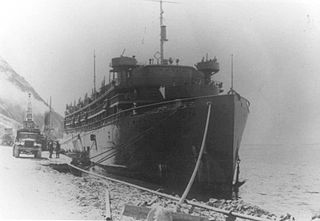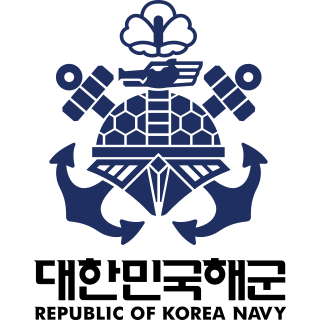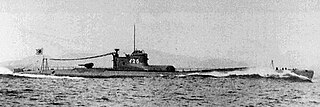
The United States Merchant Marine is composed of United States civilian mariners and U.S. civilian and federally owned merchant vessels. Both the civilian mariners and the merchant vessels are managed by a combination of the government and private sectors, and engage in commerce or transportation of goods and services in and out of the navigable waters of the United States. The Merchant Marine primarily transports domestic and international cargo and passengers during peacetime, and operate and maintain deep-sea merchant ships, tugboats, towboats, ferries, dredges, excursion vessels, charter boats and other waterborne craft on the oceans, the Great Lakes, rivers, canals, harbors, and other waterways. In times of war, the Merchant Marine can be an auxiliary to the United States Navy, and can be called upon to deliver military personnel and materiel for the military.

Dorchester was a coastal passenger steamship requisitioned and operated by the War Shipping Administration (WSA) in January 1942 for wartime use as a troop ship allocated to United States Army requirements. The ship was operated for WSA by its agent Atlantic, Gulf & West Indies Steamship Lines (Agwilines). The ship was in convoy SG 19 from New York to Greenland transiting the Labrador Sea when it was torpedoed by a German U-boat on February 3, 1943. The ship sank with loss of 674 of the 904 on board with one of the 230 survivors lost after rescue. The story of four Army chaplains, known as the "Four Chaplains" or the "Immortal Chaplains," who all gave away their life jackets to save others before they died, gained fame and led to many memorials.

The United States Revenue Cutter Service was established by an act of Congress on 4 August 1790 as the Revenue-Marine upon the recommendation of Secretary of the Treasury Alexander Hamilton to serve as an armed customs enforcement service. As time passed, the service gradually gained missions either voluntarily or by legislation, including those of a military nature. It was generally referred to as the Revenue-Marine until 31 July 1894, when it was officially renamed the Revenue Cutter Service. The Revenue Cutter Service operated under the authority of the U.S. Department of the Treasury. On 28 January 1915, the service was merged by an act of Congress with the United States Life-Saving Service to form the United States Coast Guard.

SS John W. Brown is a Liberty ship, one of two still operational and one of three preserved as museum ships. As a Liberty ship, she operated as a merchant ship of the United States Merchant Marine during World War II and later was a vocational high school training ship in New York City for many years. Now preserved, she is a museum ship and cruise ship berthed at Pier 13 in Baltimore Harbor in Maryland.

USS Overton (DD-239/APD–23) was a United States Navy Clemson-class destroyer and high-speed transport that saw service during World War II.

The Republic of Korea Navy, also known as the ROK Navy or South Korean Navy, is the naval warfare service branch of the South Korean armed forces, responsible for naval and amphibious operations. The ROK Navy includes the Republic of Korea Marine Corps, which functions as a branch of the Navy. The ROK Navy has about 70,000 regular personnel including 29,000 Republic of Korea Marines. There are about 140 commissioned ships in the ROK Navy. The naval aviation force consists of about 70 fixed-wing and rotary-wing aircraft. The ROK Marine Corps has about 300 tracked vehicles including assault amphibious vehicles.

The Japan Maritime Self-Defense Force, abbreviated JMSDF, also simply known as the Japanese Navy, is the maritime warfare branch of the Japan Self-Defense Forces, tasked with the naval defense of Japan. The JMSDF was formed following the dissolution of the Imperial Japanese Navy (IJN) after World War II. The JMSDF has a fleet of 154 ships, 346 aircraft and 50,800 personnel.

SS Republic was a sidewheel steamship, originally named SS Tennessee, lost in a hurricane off the coast of Georgia in October 1865, en route to New Orleans.

I-26 was an Imperial Japanese Navy B1 type submarine commissioned in 1941. She saw service in the Pacific War theatre of World War II, patrolling off the West Coast of Canada and the United States, the east coast of Australia, and Fiji and in the Indian Ocean and taking part in Operation K, preparatory operations for the Aleutian Islands campaign, and the Guadalcanal campaign, the Marianas campaign, and the Battle of Leyte Gulf. She was the first Japanese submarine to sink an American merchant ship in the war, sank the first ship lost off the coast of State of Washington during the war, damaged the aircraft carrier USS Saratoga (CV-3), sank the light cruiser USS Juneau (CLAA-52), and was the third-highest-scoring Japanese submarine of World War II in terms of shipping tonnage sunk. Her bombardment of Vancouver Island in 1942 was the first foreign attack on Canadian soil since 1870. In 1944, I-26′s crew committed war crimes in attacking the survivors of a ship she sank. She was sunk in November 1942 during her ninth war patrol.
The history of the United States Coast Guard goes back to the United States Revenue Cutter Service, which was founded on 4 August 1790 as part of the Department of the Treasury. The Revenue Cutter Service and the United States Life-Saving Service were merged to become the Coast Guard per 14 U.S.C. § 1 which states: "The Coast Guard as established January 28, 1915, shall be a military service and a branch of the armed forces of the United States at all times." In 1939, the United States Lighthouse Service was merged into the Coast Guard. The Coast Guard itself was moved to the Department of Transportation in 1967, and on 1 March 2003 it became part of the Department of Homeland Security. However, under 14 U.S.C. § 3 as amended by section 211 of the Coast Guard and Maritime Transportation Act of 2006, upon the declaration of war and when Congress so directs in the declaration, or when the President directs, the Coast Guard operates as a service in the Department of the Navy.
The United States merchant marine forces matured during the maritime history of the United States (1900–1999).

USS Regulus (AF-57) was a Denebola-class stores ship acquired by the United States Navy. Her task was to carry stores, refrigerated items, and equipment to ships in the fleet, and to remote stations and staging areas.

Kampfgeschwader 26 "Löwengeschwader" was a German air force Luftwaffe bomber wing unit during World War II. Its units participated on all of the fronts in the European Theatre until the end of the war. It operated three of the major German aircraft medium bomber types; the Heinkel He 111, Junkers Ju 88 and the Junkers Ju 188. The unit engaged in both strategic bombing, close air support, anti-shipping and aerial interdiction operations. The majority of its operational life – not entirely unlike another Luftwaffe wing designated KG 40 — was spent on anti-shipping missions.

The SS Carroll Victory was the twenty-seventh Victory ship built during the World War II under the Emergency Shipbuilding program. shewas launched by the California Shipbuilding Company on June 13, 1944, and completed on August 31, 1944. The ship was named after Carroll, Iowa. The ship’s United States Maritime Commission designation was VC2-S-AP3 with a hull number 27 (V-27). shewas operated by the Lykes Brothers Steamship Company and sheserved in the Atlantic Ocean during World War II. The Carroll was one of the new 10,500-ton class ship known as Victory ships that were designed to replace the earlier Liberty Ships. Unlike Liberty ships, Victory ships were designed to last longer and serve the US Navy after the war. The Victory ships differed from Liberty ships in that they were faster, longer and wider, taller, had a thinner stack set farther toward the superstructure, and had a long raised forecastle.

SS Pratt Victory was a United States Victory ship which served in the Pacific Theater of Operations during the last few months of World War II. The ship's US Maritime Commission (MARCOM) designation was VC2-S-AP3, hull number 782 (V-782). SS Pratt Victory was named after Pratt Institute in New York City. It was built in 76 days at the California Shipbuilding Yard (Calship) in Los Angeles, California and was delivered on 9 May 1945.

SS Frontenac Victory was a Victory ship built for the United States War Shipping Administration late in World War II under the Emergency Shipbuilding program. It saw service in the European Theater of Operations in the Atlantic Ocean during 1945, and in the immediate post-war period. SS Frontenac Victory was part of the series of Victory ships named after cities; this particular ship was named after the city of Frontenac, Missouri. It was a type VC2-S-AP2/WSAT cargo ship with the U.S. Maritime Commission (MARCOM), "Victory" (MCV) hull number 625, shipyard number 1597, and built by Bethlehem Shipbuilding Corporation in Baltimore, Maryland.

The SS Baton Rouge was a cargo Victory ship built during World War II under the Emergency Shipbuilding program. The Baton Rouge (MCV-846) was a type VC2-S-AP2 Victory ship built by Bethlehem-Fairfield Shipyards. The Maritime Administration cargo ship was the 846rd ship built. Her keel was laid on June 21, 1945. She was launched on August 22, 1945, and completed on September 24, 1945. The 10,600-ton ship was constructed for the Maritime Commission. The American Export Line and later the Isthmian Steamship Company operated her under the United States Merchant Marine act for the War Shipping Administration.

The SS Minot Victory was a Victory ship built during World War II under the Emergency Shipbuilding program. She was laid down and launched by the Oregon Shipbuilding Corporation, and completed on February 1, 1945. The ship's United States Maritime Commission designation was VC2-S-AP3 and hull number 149 (1203). The Maritime Commission turned it over for merchant navy operation to a civilian contractor, the Isthmian Steamship Company under the United States Merchant Marine act for the War Shipping Administration. She was named after Minot, Maine and Minot, North Dakota.

The SS Baylor Victory was a cargo Victory ship built during World War II under the Emergency Shipbuilding program. The Baylor Victory (MCV-772) was a type VC2-S-AP2 Victory ship built by California Shipbuilding Corporation in Los Angeles, California. The Maritime Administration cargo ship was the 772rd ship built. Her keel was laid on Jan. 13, 1945. She was launched on March 6, 1945 and completed on March 30, 1945. The 10,600-ton ship was constructed for the Maritime Commission. She operated her under the United States Merchant Marine act for the War Shipping Administration. She was named for Baylor University, a private Christian university in Waco, Texas. At her launching Baylor University was represented by 18 graduates and friends. University President Pat M. Neff gave a short speech at the launching and christening ceremony. Los Angeles District Judge Minor L. Moore, a Baylor graduate of 1900, also spoke. Baylor Victory was launched at 1:20 a.m. and was lit up by large floodlights.

World War II United States Merchant Navy was the largest civilian Navy in the world, which operated during World War II. With the United States fighting a world war in all the world oceans, the demand for cargo and fuel was very high. Cargo and fuel was needed around the world for the United States Navy, United States Army, United States Marine Corps, United States Army Air Forces, United States Coast Guard and the support of the allied nations of the United States. American steamship companies chartered ships from the Maritime Commission and War Shipping Administration to meet the demand. Many United States Merchant Marine ships were newly built in the Emergency Shipbuilding Program, other ships were older World War I ships that were put back in service, or private ships acquired under Emergency war requisitions. The Merchant Navy operated in the Pacific War and European war. Over 200 US Merchant ships took part in the D-day Normandy landings. To make a Normandy breakwater Harbor, called Mulberry harbour, 33 merchant ships were sunk 1,000 yards from shore. Some of the ghosts merchant ships used were damaged and others were deemed too old.
















